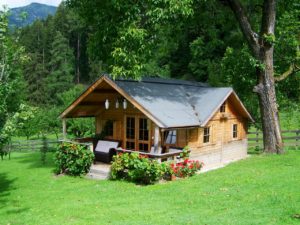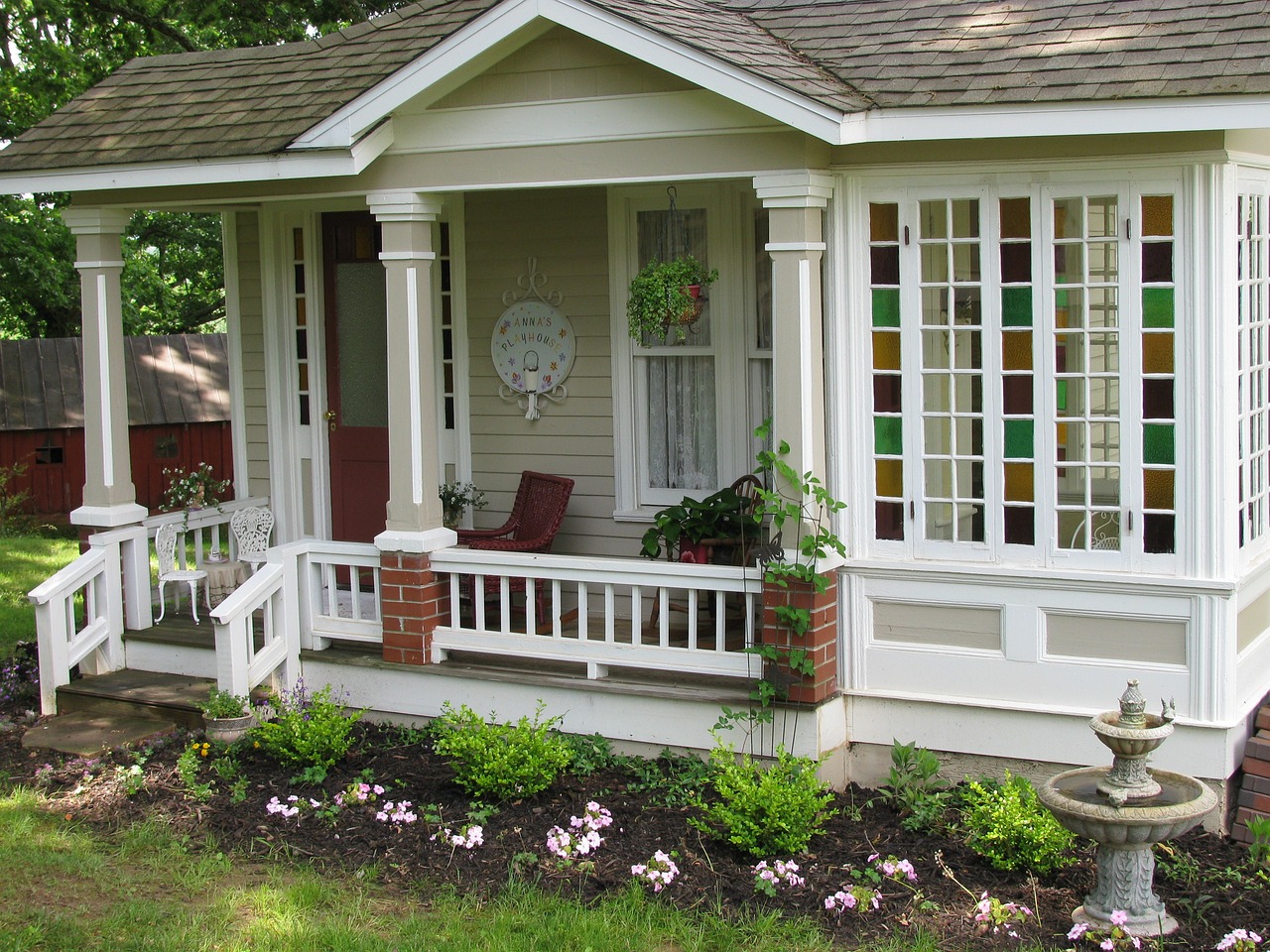As retirement approaches, many seniors find themselves contemplating a change in their living arrangements. Enter the concept of tiny homes for seniors, a growing trend that offers a unique and intriguing alternative for those seeking simplicity, retirement on budget, and a smaller ecological footprint. With their compact size and minimalist design, tiny homes have garnered attention as a viable housing option for seniors looking to downsize and embrace a more streamlined lifestyle. Senior Planet reports that 40% of tiny home owners are over the age of 50.
Tiny homes hold several notable benefits specifically tailored to the needs and desires of seniors in their retirement years.
Here are some key advantages of choosing a tiny home as a living option:

- Aging in Place: Tiny homes can be designed and built with aging in place in mind. Incorporating accessible features such as single-floor layouts, wider doorways, grab bars, and lever-style handles can enhance mobility and ensure a safer living environment for seniors. This allows individuals to maintain independence and comfortably age in their own homes, especially if living alone.
- Financial Freedom: Downsizing to a tiny home can have a significant positive impact on seniors’ finances. With reduced expenses related to mortgage payments, utility bills, and maintenance costs, seniors can free up their financial resources for other priorities such as travel, hobbies, healthcare, or simply enjoying a more financially stress-free retirement.
- Environmental Sustainability: Tiny homes promote a more sustainable and eco-friendly lifestyle. With their smaller footprint and efficient use of resources, they consume less energy and produce fewer carbon emissions compared to larger traditional homes. Seniors who prioritize environmental conservation can find satisfaction in minimizing their impact on the planet through their housing choice.
- Simplified Living and Clutter-Free Spaces: Seniors often appreciate the opportunity to simplify their lives as they transition into retirement. The limited space in a tiny home necessitates decluttering and adopting a minimalist approach. This can be liberating, allowing seniors to focus on experiences, meaningful connections, and activities that truly bring them joy and fulfillment.
- Lower Maintenance and Upkeep: Tiny homes require less maintenance and upkeep compared to larger homes. With fewer rooms and less square footage, cleaning and general maintenance tasks become more manageable. Seniors can spend less time on household chores and devote more time to pursuing their interests and enjoying retirement to the fullest.
- Close-Knit Tiny House Communities: Tiny house communities offer a sense of belonging and camaraderie among like-minded individuals. Living among peers who share similar values and interests can foster a strong sense of community and social support. Seniors can benefit from the companionship, shared resources, and a supportive network that such communities provide.
How Many Years Do Tiny Homes Last?
The longevity of a tiny home depends on various factors, including the quality of construction, materials used, maintenance practices, and environmental conditions. While there is no fixed expiration date for a tiny home, understanding the factors that can influence its lifespan is crucial.
Here are some key considerations:
- Quality Construction and Materials: A well-built tiny home using quality construction techniques and durable materials can last for several decades. Investing in solid foundations, sturdy framing, and weather-resistant materials (even tiny homes for seniors that can withstand hurricanes) contributes to the overall longevity of the structure. Additionally, using high-quality insulation, roofing, and siding materials helps protect the home from the elements and extends its lifespan.
- Regular Maintenance: Like any other dwelling, tiny homes require regular maintenance to ensure their longevity. Routine inspections, addressing minor repairs promptly, and maintaining proper ventilation are essential. Cleaning gutters, checking for leaks, and monitoring the overall condition of the home can help prevent damage and prolong its lifespan.
- Environmental Considerations: The geographical location and climate where a tiny home is situated can impact its durability. Harsh weather conditions, such as extreme heat, cold, or heavy rainfall, may necessitate additional measures to protect the home. Proper insulation, sealing against drafts, and employing climate-appropriate construction techniques can help mitigate potential damage caused by the environment.
- Upgrades and Renovations: Over time, tiny home owners may choose to upgrade or renovate their living space. These improvements can enhance both the aesthetic appeal and functionality of the home. By keeping the design current and incorporating modern technologies, owners can ensure that their tiny home remains relevant and enjoyable for many years.
It is important to note that the lifespan of a tiny home can vary. With proper construction, maintenance, and care, a well-built tiny home can last 20 to 30 years or even longer. However, it is advisable to consult with experienced builders and professionals to determine the expected lifespan based on specific design, materials, and environmental factors.
Is It Better to Live in a Tiny House or an RV?
When considering alternative living options, seniors often contemplate whether a tiny house or an RV is the better choice for their retirement lifestyle. While both options offer unique advantages, it ultimately depends on individual preferences and priorities. Let’s compare the key factors to help you make an informed decision:
- Space and Customization: Tiny houses generally provide more living space compared to RVs. They offer separate rooms, full-size appliances, and ample storage. This additional space allows for greater customization and personalization, accommodating individual needs and preferences. On the other hand, RVs are compact and designed for mobility. They offer a smaller living space with more limited customization options.
- Mobility and Flexibility: RVs excel in terms of mobility and flexibility. They are built on wheels and designed for travel, allowing seniors to explore different locations and easily change their surroundings. RVs offer the freedom to embark on road trips, visit family and friends, and experience new adventures. In contrast, tiny houses are more stationary and require arrangements for relocation, making them better suited for those who desire a fixed location or have access to tiny house communities.
- Cost and Maintenance: Tiny houses and RVs differ in terms of cost and ongoing maintenance. Tiny houses generally have a higher upfront cost due to their construction and customization. However, once settled, they offer lower ongoing expenses, similar to traditional homes. RVs have a lower initial cost but may require regular maintenance, such as engine upkeep, propane refills, and RV park fees. Seniors should consider their budget and long-term financial plans when deciding between the two options.
- Sense of Community: Tiny house communities have gained popularity in recent years, offering a sense of community and shared resources. Seniors who value social interactions and a close-knit neighborhood may find the sense of community in a tiny house setting appealing. RV parks also provide opportunities for socialization, with fellow travelers and RV enthusiasts gathering in communal spaces. The preference for community engagement should be considered when evaluating the options.
Living full time in a tiny house requires careful consideration, planning, and a willingness to embrace a minimalist lifestyle. With efficient space utilization, customization options, and an awareness of zoning regulations, seniors can create a comfortable and personalized living environment that suits their needs. Additionally, exploring tiny house communities can provide social connections and a supportive network. By approaching tiny house living with an open mind and a spirit of adventure, seniors can enjoy the benefits of simplicity, mobility, and financial freedom that come with this alternative housing option.
Tiny House for Seniors Online Resources
Websites/Blogs
YouTube Videos/Channels

